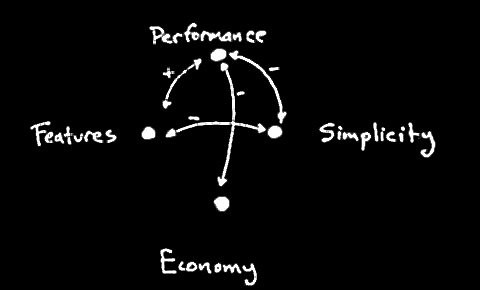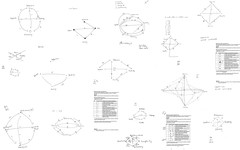
Objective
Organise, model and explore the interrelationship between different requirements.
Requirements/Design Preparation
1. In groups of 2 or 3 categorise the following non-functional requirements for an imaginary high tech product.
Statement of non-functional requirements
- A simpler product (system, service, device) will be easier to manufacture and operate.
- A simple product with fewer features is going to be less costly to maintain.
- A simple product is easier to construct as it has fewer features.
- Greater system performance or power is achieved by including more (advanced) features.
- A highly optimised product is difficult to improve, change, fix or maintain without degrading its performance.
- A simpler product does not deliver as many features or options as a more complex product.
- A simple product using fewer specialised parts will not perform to as high a level as one using specialised optimised parts and sub-systems.
- Adding more features makes the product more difficult to maintain.
2. Consider following product requirements categories: Simplicity, Performance, Feature Set, Build/Operate Economy.
3a. Map these non-functional product requirements to the following categories: Simplicity, Performance, Features, Economy (+ or - for complement or conflict).
3a. Map these non-functional product requirements to the following categories: Simplicity, Performance, Features, Economy (+ or - for complement or conflict).
3b. (Online version) Use a Jamboard to draw the trade-off diagram (link). Each group draw numbered arrows with plus or minus indicators (+/-) to complete the diagram, illustrating the relationships between the requirements listed.
Discussion:
- Do requirements influence design decisions?
- Is a unique solution possible satisfying all requirements?
- Do requirements specify design?
- Is it possible to overcome contradictory requirements?
- Would more detail enable us to overcome contradiction?
- Will computer modelling of requirements enable conflicts to be resolved?
- Does the design of the product limit which requirements can be delivered?
- Is there always a trade-off between requirements and design?
Reference:
Alexander, C. (1964) Notes on the Synthesis of Form, Cambridge, Massachusetts, Harvard University Press.
A Collage of Outputs from the Requirements Exercise
